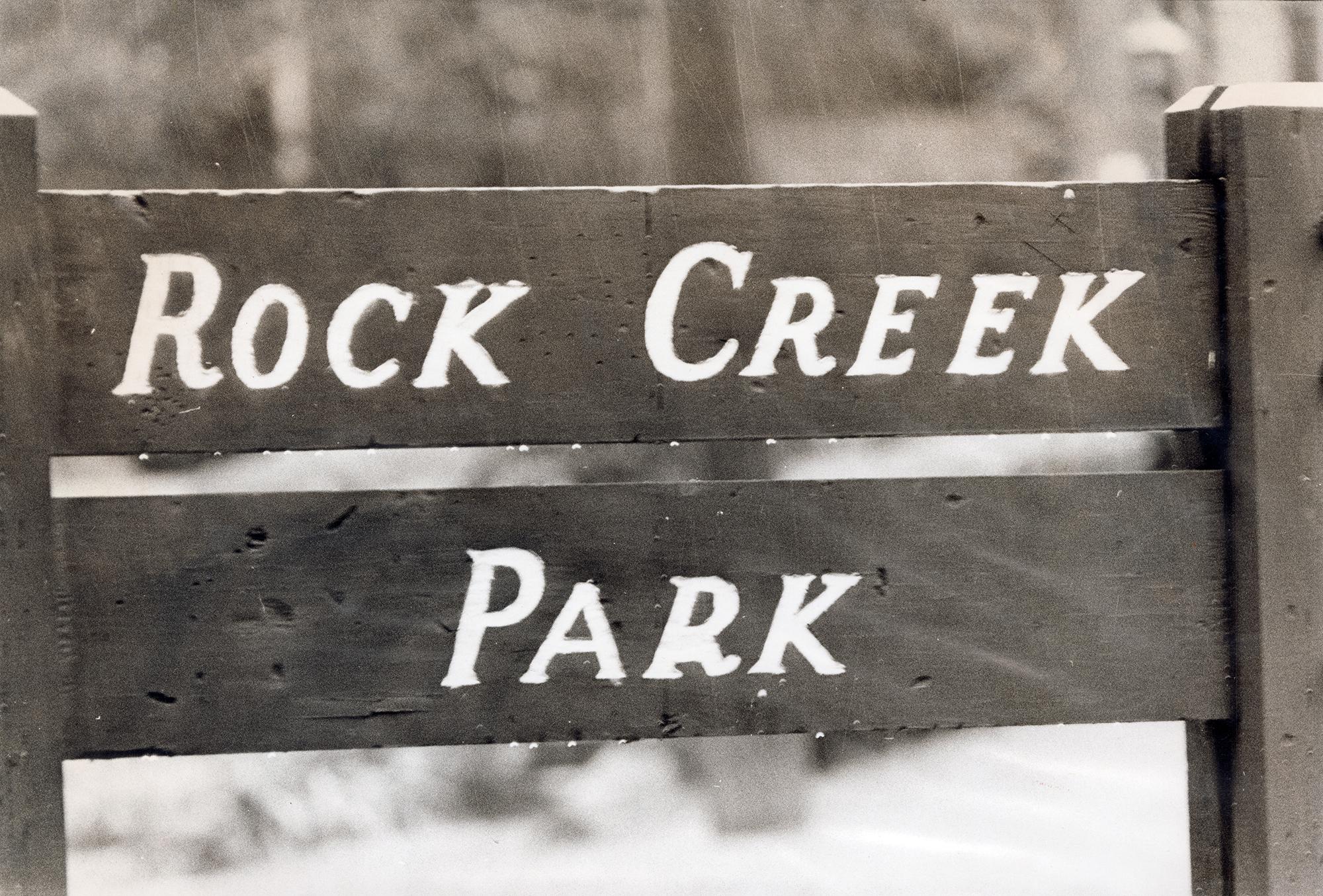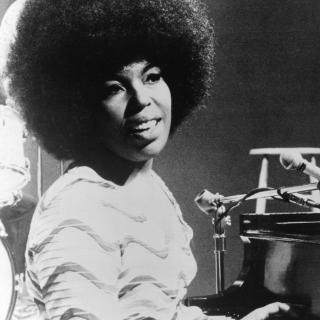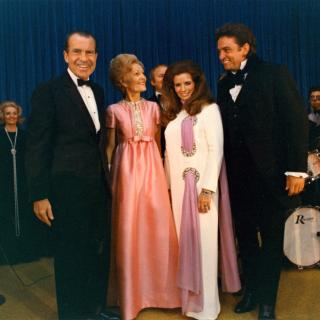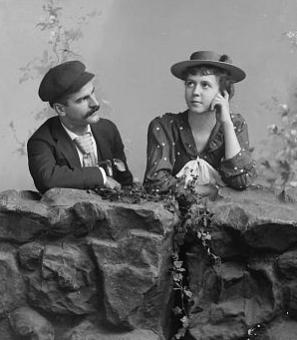For The Blackbyrds, Making Music was a Walk in the Park
If you’re from the D.C. area, you know Rock Creek Park for its hiking trails and scenic views. But if you’re from any other part of the country, you might recognize it best from the 1975 song, “Rock Creek Park,” which peaked at number 37 on the Billboard’s R&B charts in 1976 and has since been sampled by numerous artists, including Ice Cube, Nas, De la Soul, and Eric B. and Rakim.[1]
Keith Killgo, a drummer for The Blackbyrds—the band behind “Rock Creek Park”— told The Washington Post about the song’s genesis.
It started in Camden, New Jersey, at a place we called Chicken Bone Alley. We were opening for the Commodores. We got there early, just goofing around... [Later] we were laying the grooves down in the studio, and I started singing, "In Rock Creek Park," and everyone started chiming in, ‘Ooh, yeah.’ And it just became a jam.”[2]
The song’s minimalist verse describes happenings at the local park after sundown:
Killgo, who visited the park often throughout his childhood and adolescence,[3] reflected on the meaning of the lyrics in an interview with Washingtonian magazine in 2019.
It’s where you take your girlfriend with a bottle of wine. After dark, the whole scene changes: the bugs, the sounds, the creatures that crawl around. For me, it was more fun. You could be kind of spooky. Yeah, lots of wonderful things happen after dark…In high school, that was one of the best spots to go. Also, it was sometimes just a place to get away from everything and think, meditate, look at the stars.”[4]
It’s no wonder the bandmembers were so familiar with the spot, since The Blackbyrds was a local group, made up of Howard University students.
The band formed in 1973 under the guidance of famous professional trumpeter and Professor of Music Donald Byrd. In their early days, when Byrd described their sound, he said “If you who remember me then expect you’re going to hear the stuff we used to do, forget it... Get the young, what they’re doing. Par-rty a bit.”[5]
Byrd was no stodgy old professor. He was hired to direct the University’s nascent Jazz Studies Program in 1968 as a result of the largest campus protest in Howard’s history.[6] Students demanded a change to the European-centric curriculum and wanted Black Studies courses. The Department of Music, which had actually forbidden students to play Jazz on campus at one point, wasn't exempt from the students’ discontent.[7]
Byrd was perhaps the perfect man for the job; as Howard student journalist Pearl Stewart observed in 1970, “Being controversial is not new to Byrd, because during the two years that he has been here, he has suggested and attempted things novel to Howard University.” Byrd sought recording contracts for the Gospel Choir, and actually used the song “Weasil,” written by his student Charles Hendricks, on his album, Fancy Free.[8]
Kevin Toney, the keyboardist for The Blackbyrds, spoke fondly of his mentor in a 1974 interview with the Evening Star.
Donald saw what each student did, the potential that each musician had and he kind of formed a band together. Then he took the professionals that he had in his band and replaced them with student musicians... He always made everything a practical situation and it was a realistic type thing. As a result, we still study on the road and practice four to five hours every day. That's just the way it is.”[9]
The Blackbyrds started out touring with Byrd on the weekends, doing concerts with artists like Richard Pryor, Gladys Knight and the Pips, and Herbie Hancock. Eventually, they signed with Fantasy Records, performed to sold-out audiences at major venues, and toured historically black colleges around the country— performing and giving clinics and demonstrations to inspire other young musicians.[10]
Critics found their sound to be entirely fresh. Frederick I. Douglass reviewed “Rock Creek Park” as the first track on the album City Life in 1975:
No matter where you place the needle on this LP, mellow sounds burst forth to stimulate your ears and the pleasure center of your brain. ‘Rock Creek Park,’ for example, features like interplay between the instruments and background vocalists. The jam is very danceable and should make an impact on Top-40 markets…While I dig the Jazz heavies like Trane, Miles, Dolphy, Monk, and Mingus, I can also relate to the danceable jazz that is being put out by groups like The Blackbyrds.”[11]
“Rock Creek Park” was by no means their biggest hit, however. In 1975, “Happy Music,” from the same album, was a U.S. Top 20 song. The 1974 hit “Walking in Rhythm” was a top 10 single and received a Grammy nomination.[12] Toney recalled:
That song just blew up out of nowhere. Over the course of a couple of months, it was in the top five on four charts, simultaneously…We still didn’t get it, but Donald knew what he had.”[13]
Byrd told Atlanta Daily World, “Though it took me 25 years and these kids only one, we’ve got gold albums now.”[14]
Three of them, to be exact. According to Concord Music Publishing, which now incorporates Fantasy Records; City Life, Unfinished Business, and Action—all produced by Byrd—went gold by 1980.[15] Despite their youth when they started, the musical legacy of The Blackbyrds was undeniable.
Radio DJ for WHUR-FM (which began at Howard in 1971) Joe Gorham told The Washington Informer, “What makes The Blackbyrds music so different is its timelessness… Before we had go-go music, Byrd had a sound that was this R&B and D.C.-oriented vibe. As a group, they blended R&B and jazz and Byrd mixed in this jazz-funk flavor that was just great."[16]
Their career remains influential to young musicians who are seeking to make a name for themselves. Although several of the bandmembers decided to pursue music full-time and cut short their collegiate studies, other Howard student-musicians have benefitted from their success. “The school’s Jazz Ensemble has recorded several albums, and has traveled around the world. We definitely paved the way for that situation.” Killgo said in 1980.[17]
In the present day, the music of The Blackbyrds, “Rock Creek Park” in particular, is still a favorite in the District, a staple on the jukebox at Ben’s Chili Bowl.[18] The song was even honored with a ceremonial resolution from the D.C. Council in 2006, when The Blackbyrds performed it in its title location.[19]
Killgo acknowledged the song’s special significance to the District. “I guess the Blackbyrds were conceived here in Washington, D.C., and that really cemented it. Forever we will be associated with Washington, D.C., and the fun part of D.C., because Rock Creek Park is about having a good time.”[20]
Footnotes
- ^ Richards, Chris. "These Blackbyrds have Lots to Crow about; Three Decades on, D.C. Band Still Provides a Fitting Accompaniment to Summer: FINAL Edition]." The Washington Post, Aug 20, 2006.
- ^ Heim, Joe. "Just Asking: Keith Killgo of the Blackbyrds, Who Sang 'Rock Creek Park' (Posted 2014-07-13 14:32:17): The Singer of the 70s Song "in Rock Creek Park" Talks about the Inspiration--and Nature's Groove." The Washington Post, Jul 13, 2014.
- ^ Ibid.
- ^ Cartagena, Rosa. “Park Sex Is in the News. A Brief Chat With a Guy Behind the Song ‘Rock Creek Park.’” February 26, 2019. Washingtonian. https://www.washingtonian.com/calendar/the-blackbyrds/
- ^ Rogers, Prentis. (1977, Apr 10). "Donald Byrd & the Blackbyrds A composite of jazz & boogie." Atlanta Daily World (1932-2003) Retrieved from https://search-proquest-com.dclibrary.idm.oclc.org/docview/491485161?ac….
- ^ “Institute of Jazz Studies cited innovation among Black schools.” Dec 13, 1968. The Hilltop. 8. https://dh.howard.edu/cgi/viewcontent.cgi?article=1186&context=hilltop_196070 And Adams, Brenda. “Students Struggle for Black University” March 29, 1968. The Hilltop. 1. https://dh.howard.edu/cgi/viewcontent.cgi?article=1168&context=hilltop_196070
- ^ “Howard University Jazz Ensemble in a Tribute to 2000 NEA Jazz Master Donald Byrd.” Thursday, March 7, 2013, 12:40 p.m. Andrew Rankin Memorial Chapel. Howard University Department of Music. http://music.coas.howard.edu/huje/bobby-watson.pdf
- ^ Stewart, Pearl. “Byrd changes mind: decides to remain at HU” April 24, 1970. The Hilltop. 3. ://dh.howard.edu/cgi/viewcontent.cgi?article=1224&context=hilltop_196070
- ^ “No Bye-Bye For Howard’s Blackbyrds.” Evening Star, August 10, 1974: 50, accessed June 24,2019.
- ^ McKenzie, Vashti. “The McKenzie report: Donald Byrd and Blackbyrds.” (1974, Nov 30). Afro-American (1893-1988) .
- ^ Douglass, F. (1975, Nov 29). “Blackbyrds latest jam.” Afro-American (1893-1988).
- ^ “The Blackbyrds.” November, 1980. Concord.com. https://concord.com/artist/the-blackbyrds/ .
- ^ Toney, Kevin. Interview with Lee Bailey. “For the Record.” Lee Bailey’s Electronic Urban Report. Eurweb.com. https://eurweb.com/2019/04/26/for-the-record-kevin-toney-of-the-blackbyrds-on-donald-byrd-mentorship-lawsuit-not-understanding-why-walking-in-rhythm-was-a-hit/ .
- ^ Rogers, Prentis. (1977, Apr 10). Donald Byrd & the Blackbyrds A composite of jazz & boogie. Atlanta Daily World (1932-2003).
- ^ “The Blackbyrds.” November, 1980. Concord.com. https://concord.com/artist/the-blackbyrds/
- ^ Brown, Stacy M. “Blackbyrds Take Flight for Group’s Founder.” April 4, 2013. The Washington Informer. https://issuu.com/wi3117/docs/wi_040413_00_00_000_c
- ^ “The Blackbyrds.” November, 1980. Concord.com. https://concord.com/artist/the-blackbyrds/ .
- ^ Einberger, Scott. A History of Rock Creek Park: Wilderness & Washington. (Arcadia: 2014).
- ^ Richards, Chris. "These Blackbyrds have Lots to Crow about; Three Decades on, D.C. Band Still Provides a Fitting Accompaniment to Summer: FINAL Edition]." The Washington Post, Aug 20, 2006.
- ^ Heim, Joe. "Just Asking: Keith Killgo of the Blackbyrds, Who Sang 'Rock Creek Park' (Posted 2014-07-13 14:32:17): The Singer of the 70s Song "in Rock Creek Park" Talks about the Inspiration--and Nature's Groove." The Washington Post, Jul 13, 2014.




![504 Button Bright yellow protest button created by the American Coalition of Citizens with Disabilities (ACCD). The pin reads in black block-lettering: "Handicapped Human Rights, Sign 504, ACCD." [Source: National Museum of American History]](/sites/default/files/styles/crop_320x320/public/504%20Button.jpeg?itok=yiaSjVx2)

![Sketch of the mythical fuan by Pearson Scott Foresman. [Source: Wikipedia]](/sites/default/files/styles/crop_320x320/public/2023-10/Goatman_Wikipedia_Faun_2_%28PSF%29.png?h=64a074ff&itok=C9Qh-PE1)












